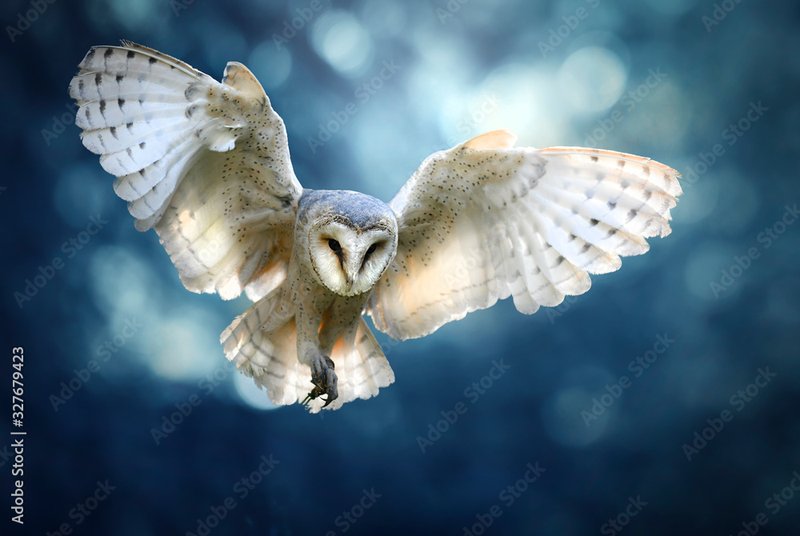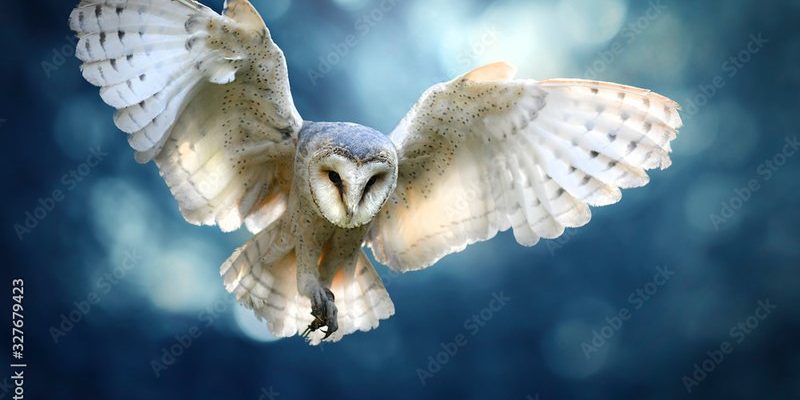
The enchanting world of owls often leaves us wondering about the secrets behind their silent flight and deadly hunting prowess. How do these birds, often seen as symbols of wisdom and mystery, manage to outsmart their prey? As we dive into the unique flying and hunting techniques of these remarkable raptors, you’ll discover how they’ve adapted to become the ultimate nocturnal predators.
Silent Flight: Nature’s Engineering Marvel
One of the most remarkable features of owls is their ability to fly silently. While most birds create noise as they flap their wings, owls have a unique adaptation that allows them to soar through the night without a sound. This incredible feat is mainly due to the structure of their feathers.
Owls have specially designed wing feathers with serrated edges that break up the turbulence as air flows over them. This design reduces the noise created during flight, enabling them to approach unsuspecting prey stealthily. It’s like having a set of custom shoes that don’t make a sound on any surface! This silent flight is crucial for their hunting success, as it allows them to ambush rodents and small mammals without giving them a chance to escape.
But that’s not all! Their broad wings also provide excellent lift, allowing them to glide gracefully through the air. This combination of silent flight and effective gliding makes owls some of the most efficient hunters around. When you think about it, nature has crafted an incredible tool for survival.
Exceptional Night Vision
Imagine trying to navigate a dark room without turning on the lights. For owls, this isn’t an issue—they’re equipped with extraordinary night vision that allows them to see in conditions that would leave most of us stumbling in the dark. Owls have large eyes that can gather more light than those of many other birds. This ability is vital for spotting prey in low-light environments.
The eyes of an owl aren’t just bigger; they’re also shaped differently. They have a tubular design, which helps them focus light more effectively. However, this comes with a trade-off: owls can’t move their eyes in their sockets like we can. Instead, they have a remarkable ability to rotate their heads nearly 270 degrees! This adaptation helps them look around without moving their bodies, allowing them to stay hidden while scanning for movement.
Their incredible vision isn’t just about brightness; they can also detect slight movements. This sensitivity to motion helps them pinpoint prey even when it’s hidden in foliage. It’s no wonder that a silent flight coupled with exceptional vision makes them masters of the night.
Hearing That’s Out of This World
You might think that great vision is enough for a successful hunter, but owls take it a step further with their incredible hearing. They possess what’s known as asymmetrical ears, meaning one ear is positioned higher than the other. This unique feature allows them to pinpoint the location of sounds in three-dimensional space.
When an owl hears a noise, the difference in ear height helps it determine whether the sound is coming from above, below, or to either side. This capability is critical when hunting in the dark, as they can hone in on the faint sounds of prey moving through the underbrush. Imagine trying to hear a whisper in a crowded room—owls can do just that, even in the dead of night.
This combination of exceptional hearing and silent flight means that owls can hunt with an efficiency that few animals can match. They can locate and capture prey that other predators might miss, making them formidable hunters.
Hunting Techniques: The Ambush Approach
Owls generally rely on the element of surprise when hunting. Their approach can best be described as an ambush tactic. Imagine a cat stalking its prey, taking slow and careful steps to ensure it doesn’t make a sound. Similarly, owls perch on branches or other vantage points, patiently waiting for the perfect moment to strike.
Once they spot potential prey, they launch themselves from their perch in a swift, calculated manner. This sudden burst of energy, combined with their silent flight, makes them nearly undetectable until it’s too late for the unsuspecting creature below. It’s a powerful reminder of how patience and precision play pivotal roles in their hunting success.
Additionally, owls are not one-size-fits-all hunters. Different species have specialized techniques based on their environment and the types of prey they pursue. For instance, the Barn Owl often hunts in open fields, using its keen eyesight to spot movement from above. Meanwhile, the Great Horned Owl might rely more on its strength to capture larger prey. Each hunting style is a testament to their adaptability and skill.
Diet: What Do Owls Eat?
Owls are versatile eaters, often depending on the species and their habitat. While many of us might think of them as rodent hunters, their diets can be surprisingly diverse. Common prey includes small mammals, insects, and even other birds.
Let’s take a look at some common types of owls and what they typically feast on:
- Barn Owl: Primarily hunts small mammals, such as mice and voles.
- Great Horned Owl: Has a broader diet that includes everything from rodents to small deer.
- Eastern Screech Owl: Often preys on insects and small birds.
Owls also have a unique way of digesting their food. After they eat, they will regurgitate pellets that contain fur, bones, and other indigestible parts of their prey. This behavior helps researchers understand their diet and the ecosystem in which they live.
Understanding what owls eat is essential to appreciating their role in the environment. They help to control small mammal populations, which can have ripple effects throughout their ecosystems.
Conservation and Protection of Owls
Despite their fascinating adaptations, many owl species are facing threats. Habitat loss, pollution, and climate change are significant challenges that have put some species at risk. It’s crucial for us to be aware of these issues and work to protect these majestic birds.
Conservation efforts include creating safe habitats, educating the public about the importance of owls in the ecosystem, and supporting organizations dedicated to wildlife preservation. Simple actions, like creating bird-friendly spaces in our own backyards, can make a positive impact.
By recognizing the unique flying and hunting techniques of owls, we can appreciate their vital role in nature. Protecting them isn’t just about preserving their beauty; it’s also about maintaining the balance of the environments they inhabit.
Owls are truly remarkable creatures, showcasing a blend of beauty, grace, and efficiency. Their silent flight, exceptional hearing, and masterful hunting techniques make them one of nature’s most fascinating predators. As we learn more about their adaptations and behaviors, we become reminded of the complexity of our natural world.
So, the next time you catch a glimpse of one of these nocturnal hunters soaring through the night sky, take a moment to appreciate the incredible skills they possess. By understanding their unique flying and hunting techniques, we can foster a greater admiration for these enigmatic birds and work together to ensure their future. After all, preserving the wonders of wildlife benefits us all.

